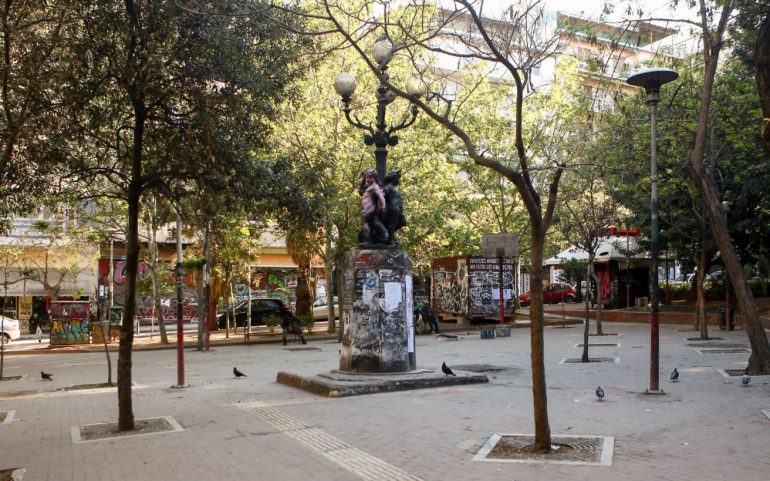It is probably the most talked about and controversial area Of Athens, having passed into the collective unconscious as synonymous with rebellion or crime, as it has been the refuge of troubled young people and the center of "questioning" for decades, especially after the coup.
Exarchia is one of the most central neighborhoods of the capital and in many cases occupy the news, not always positively, gathering the spotlight and the fire of criticism.
A few months ago, the then Deputy Minister of Civil Protection, Katerina Papakosta, had said: "For me Exarchia is a historical neighborhood of Athens, it is a center of art and culture, which my political vision sees as Montmartre of the capital and not as a suffering area", provoking reactions and comments with the rather bold her statement.

But apart from the myth that covers them, what exactly is Exarchia?
The grocer from Konitsa
In the second half of the 19th century, on Themistokleous Street, a merchant from Epirus opened a large grocery store that became known for its low prices and oil. The name of Vassilios Exarchos was to "baptize" the area, which until then was called "Pitharadika", as from there the Athenians bought jars for their homes.
After the revolution of 1821, many craftsmen from the Cyclades, the Peloponnese and Epirus arrived in liberated Athens, to contribute to the construction of the capital, giving names to the area related to the Revolution. That is why today the streets of Exarcheia have heroic names, such as Tzavella, Messolonghi, Mani, Navarino, Valtetsi, Dervenia, Zaloggou, Nikitara, Mavrokordatou, Gravia, Koletti.
Exarcheion square
Every big city that respects itself must have an area a little different from the others, an area where passions prevail over logic and where its "tribes" seek something beyond the ordinary. Kreuzberg is in Berlin, Montmartre is in Paris, and Soho is in London.
The area of Athens that combines a bit of art, a bit of "revolution", a bit of carefreeness and a bit of art is Exarchia. And of course centered on the famous square. In one corner there is the Blue Apartment Building, somewhat gray today, built 86 years ago. Its apartments have hosted several personalities from the field of letters and arts. For the nostalgic of the '90s, the Blue Apartment Building has also been the setting for the TV series "Because of Price".
And of course Exarchia is full of street art, famous graffiti, other bad tastes and other masterpieces.
"Roads have their own history"
If there is one word that comes to mind when listening to "Exarcheia" it is: questioning. Against the just and the unjust perhaps, but the history of the region is inextricably linked to uprisings and resistance.
The beginning of the political history of the Exarchates is the distant 1859, when a student uprising broke out against the economic policy of the Bavarian monarchy. The "straw hats" the students wore at the time appeared to be a reaction, as the quotes that the students were required to wear were expensive.
The first meeting of its founders took place in Exarchia, on Mavromichali Street EAM, in 1941. In December 1944, the area was located between two camps. Specifically, the Elasites were fortified on the hill of Strefi and the surrounding buildings while the government ones were in Chemio and Kolonaki. During the December uprising, many of the fierce battles fought in Athens took place inside the apartment buildings fortified by the left. In one of them, which was hit by a British tank, at the junction of Mavromichali and Navarinou streets, the face of the legendary composer Giannis Xenakis was deformed, who lost his left eye.
The "fiery" years of the change of government
After the seven years of the colonel junta, the Exarchates slowly began to build their modern "myth". The Technical University of 1973 has formed consciences and is a milestone for the post-government generations of young people. Located just below Exarcheion Square, in Patision, Stournari, Tositsa and Bouboulinas streets, will be the reference point for the creation of new narratives of resistance against bad texts.
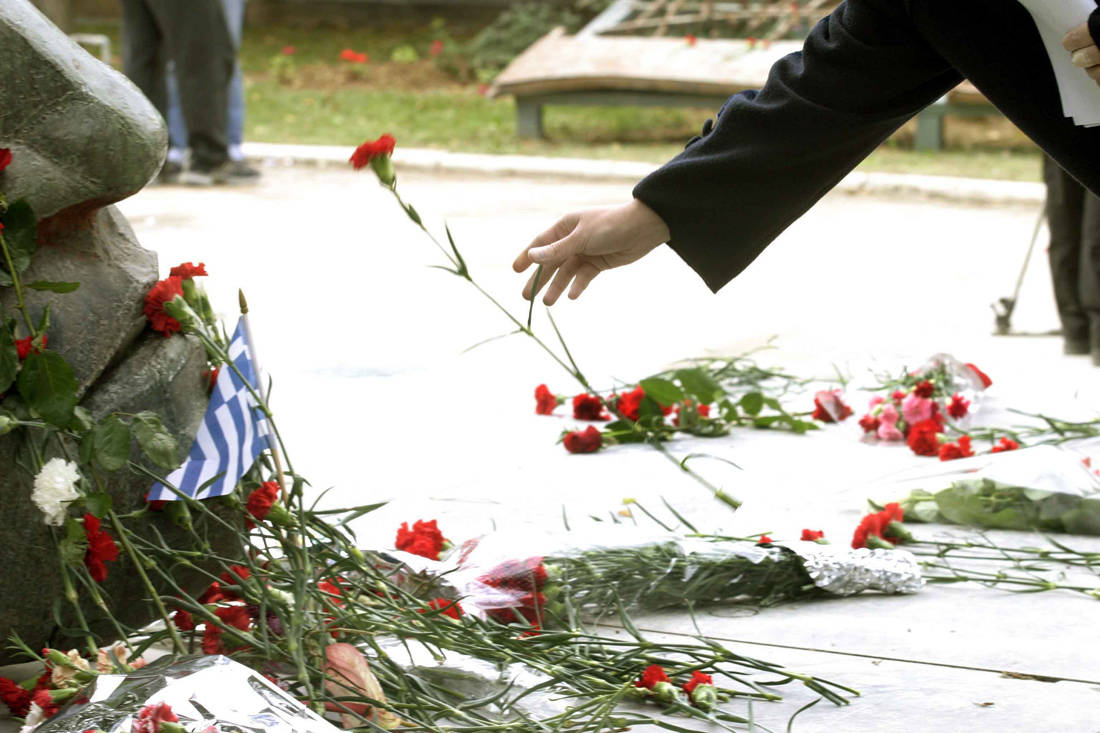
The tribes of the Left with their conflicts, the youth movements, the alternative and a little more "flu" young people of the time and the students fill the narrow streets of the neighborhood and find refuge in its homes.
The reasons are many: student squatting against law 815, squatting of anarchists, underground music, punk that was born in Plaka and politicized in Exarchia, clashes with the police. And drugs. It all peaks in the 80s.
"The substances had plagued since the winter of '76, as soon as the first company was formed here, the drugs appeared and even the heavy ones. "The little ones, who were us at the time, were suckered", says characteristically one of the old visitors of the area.
In all this, the "Holy Trinity of the Exarchates", as Leonidas Christakis called it: Pavlos Sidiropoulos, Nikolas Asimos, Katerina Gogou. Beautiful as cursed, they lived fast, free, unconventional and left prematurely and ignominiously.
"The State of the Exarchates"
In the mid-80s, the square and the streets of Exarcheia were often the scene of clashes between anarchists, young people and students on one side and police on the other. In the middle was the "war of drugs». "The cops are selling heroin," insist the anti-authoritarians, who in November 1987 arrested heroin traffickers and reported their details to the Greek police.
Somewhere in the mid-80s, the so-called "Areti" operations started. Arrests, wood, theft war, MAT in Exarcheion square.
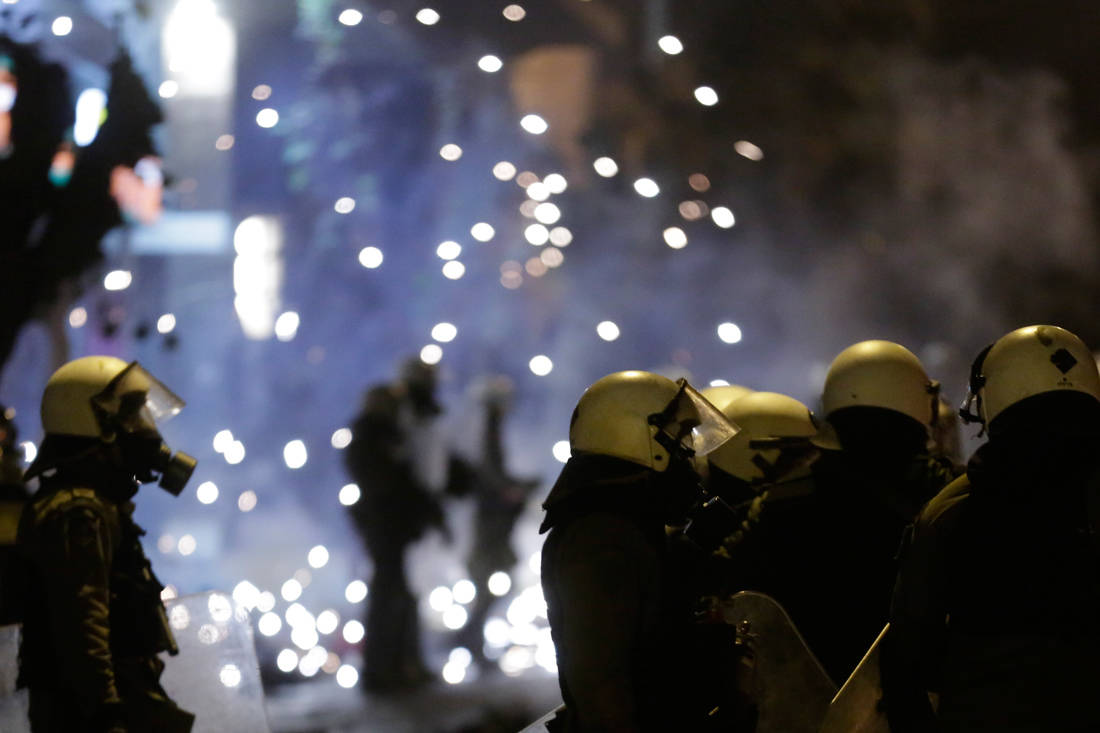
But the police also had a "star" among them: Nikon Arkoudeas was perhaps the most recognizable police officer of the post-colonial period. The anarchists of the Exarchates with humor had chanted the slogan: "Change is not possible without the Bear, he is not a cop, it is an idea!".
His government PASOK she had already spent her first term in power and had to find a way to "tame" the savage youth. The press talks about the "state of the Exarchates". The new Minister of Public Order is General Antonis Drossogiannis, a former LOC officer in the civil war with the national army.
But the plan was not just repression. At the end of May 1985, the then Minister of the Ministry of Environment, Physical Planning and Public Works, V. Kouloumbis, published a plan for the "renovation" of the Exarchates and the conversion of the district to the standards of Thissio and Plaka: pedestrian walks, removal of steak houses and bars, development of mild tourist infrastructure.
While Kouloumbis was ready to announce the renovation package, the same night MAT operated in the square. This ended any thought of regeneration.
This was not the only time that in the minds of the rulers Exarchia was a field "ripe" for regeneration and residential development. "Exarchia will become like Plaka" the then Deputy Minister of PEHODE had told Eleftherotypia in 1993 George Voulgarakis.
The two 15-year-olds with a common destiny
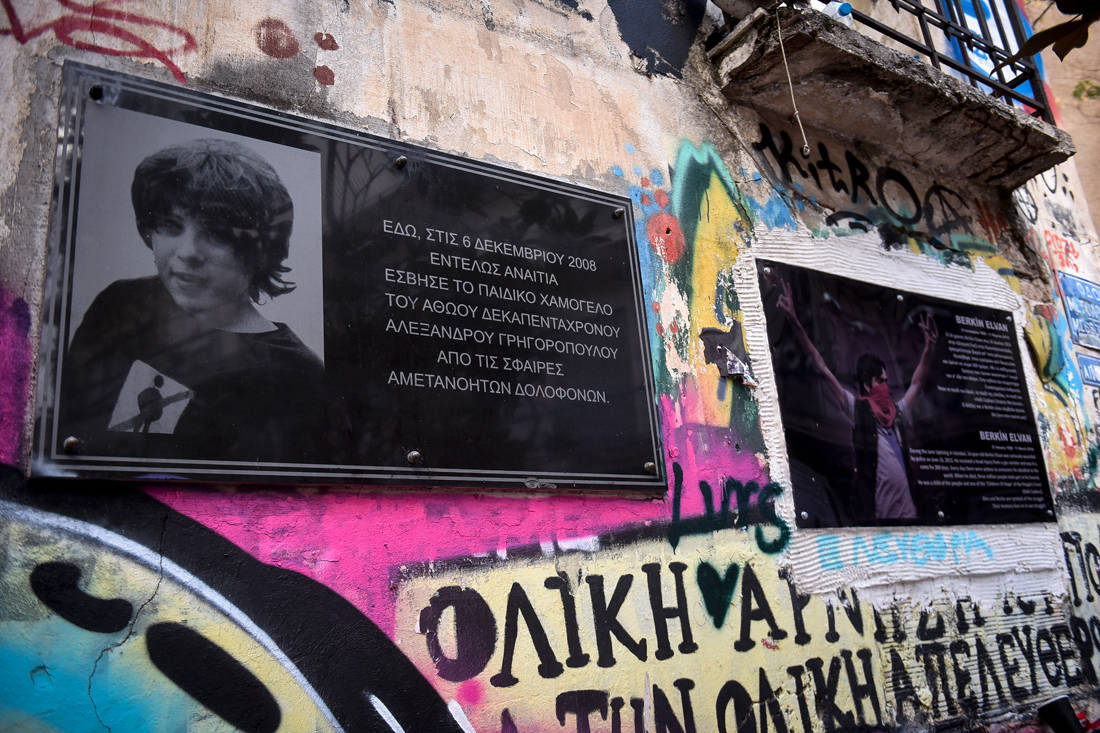
On November 17, 1985, after a Molotov cocktail attack on a police cage in Stournari and Patision, police officer Athanasios Melistas shot the 15-year-old in the back. Michalis Kalteza. The continuation of demonstrations, incidents, roadblocks, with the press focusing on the disasters and the young people responding: "You are talking about shop windows, we are talking about lives". In January 1990, Melistas was acquitted secondarily and hundreds of young people who described themselves as "the flower of Greek youth" occupied the Polytechnic for twelve days.
"History repeats itself for the first time as a tragedy and the second as a farce," said Karl Marx. On December 6, 2008, the 15-year-old Alexandros Grigoropoulos is shot dead in the "heart" of the Exarchates by the special guard Epamineondas Korkoneas, triggering an unprecedented, massive, angry youth uprising that finds Greek society embarrassed.
"What is left of the fire?"
These approximately 900 acres, which extend from Akadimias Street to Alexandras Avenue and from Patision to Hippocrates, have become a major national and political issue.
Today, the media and a large part of the political world identify Exarcheia with a cave of lawlessness, an abyss for many people, for whom the only answer is the intervention of the police and the liquidation.
Recent incidents of robbery, drug trafficking but also the "fiasco" of the Coast Guard, when in a chase of a suspect from Piraeus at the junction of Themistokleous and Eresos streets, a group of about 50 people attacked men of the House, in the presence of the Prosecutor, they have contributed to the consolidation of the need "to do something".
Immigrants have flocked to find shelter with abandoned buildings to give them housing and the area to take on a new color, something that creates positive and negative reactions in Greek society.
The wounds of the financial crisis have altered the "glories of the past" and Exarchia now has to compete with many other areas of the center, which have become hangouts for young people and students, such as Petralona and Koukaki. However, they remain an ideal destination for tourists looking for something different, something alternative.
Business Exarcheia is another area where entertainment and nightlife can be profitable, but what seems to be tomorrow's business plan is Airbnb. Neoclassical houses and apartments in not so good condition are being renovated to be a source of income for the owners and close to the tenants.
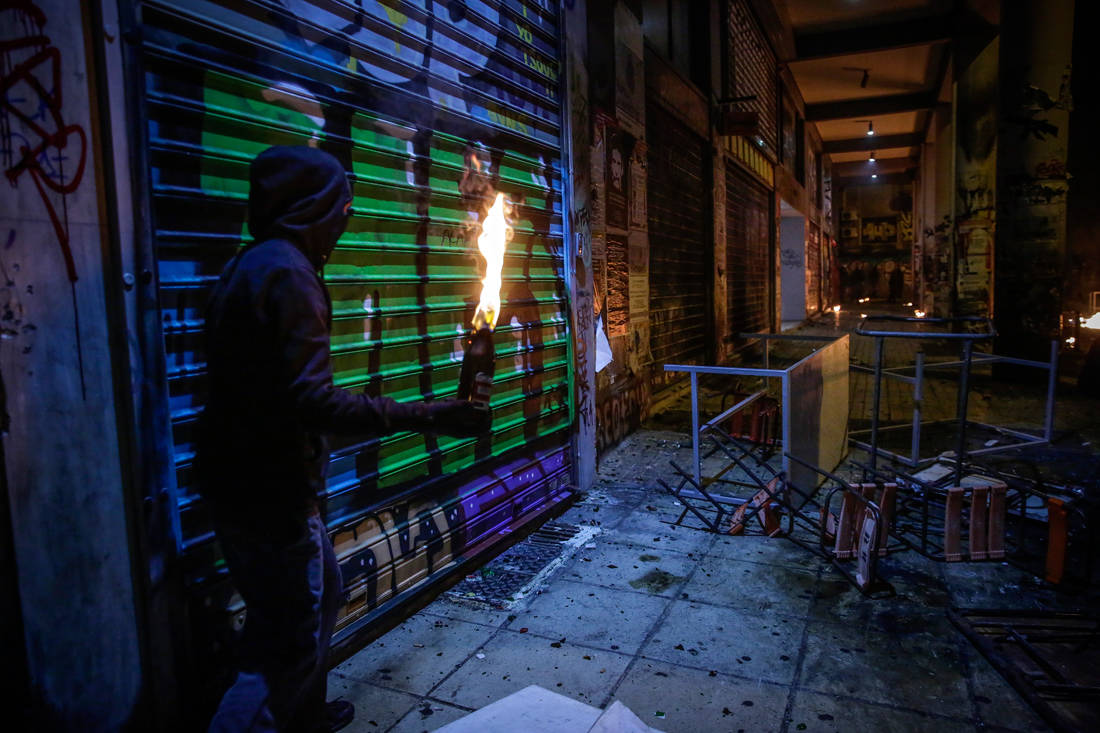
In the housing development plans of the area there is always the "Metro" file. Specifically in the plans of the governments for some years, the square is planned to host one of the new stations of its new line Subway, which means that the site will remain closed for construction for a long time. For the time being, as in any other attempt to regenerate the Exarchates, these are plans on paper.
Beyond the "myth"
In the 2015 referendum on the package of measures by the lenders, Exarchia voted 57% in favor of "YES", something that does not seem to match the history and tradition of the region. In the parliamentary elections of July 7, some people stole the ballot box from a school on Koletti Street. Perhaps these are the two sides that compose the image of the Exarchates.
Exarchia is for many a place where they have spent hours in political debates or have fun in taverns and rock bars. For others, it is endless walks in the narrow streets, climbs on the hill of Strefi from the steps of Benaki and voices in the stands of "Asteras", the only team that has celebrated relegation.
Of course, many people have just heard about the Exarchate in the news, about Molotov cocktails from anarchists or about the drug mafia.
In any case the Exarchia is a place with undoubted historicity and tradition and a neighborhood with a character and a fragrance that has remained over time.
